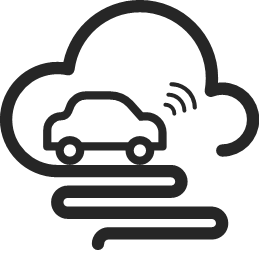Real-time location-aware road weather services composed from multi-modal data

Project Status: Running
Start Date: November 2018
End Date: April 2022
Budget (total): 10641 K€
Effort: 135.6 PY
Project-ID: 2016/3-5
Administrative Coordinator:
Name: Joaquim Ferreira
Company: Instituto de Telecomunicações (IT)
Country: Portugal
E-mail: jjcf(at)ua.pt
Technical Coordinator:
Name: Nadjib Aitsaadi
Company: University Paris-Est Créteil
Country: France
E-mail: nadjib.aitsaadi(at)u-pec.fr
Instituto de Telecomunicações, Portugal
University Paris-Est Créteil, France
Verhaert New Products & Services, Belgium
IMEC – Interuniversitair Micro-Electron, Belgium
Royal Meteorogical Institute, Belgium
Belgian Postal Services, Belgium
Be-Mobile, Belgium
Inuits, Belgium
Commissariat à l’Energie Atomique et aux énergies alternatives (CEA-LETI) , France
YoGoKo, France
eLichens SA, France
Idemia, France
Dtonic Corporation, Korea
MICROIO, Portugal
EURICO Ferreira, Portugal
ENEO TECNOLOGIA S.L. , Spain
CBT, Communication & Multimedia, S.L, Spain
Innovalia Association, Spain
Ericsson Arastirma Gelistirme ve Bilisim Hiz. A.S, Turkey
Turkcell, Turkey
Otokar, Turkey
TURKGEN YAZILIM SANAYI TICARET LIMITED SIKRETI, Turkey
BEIA Consult International S.R.L., Romania (not yet active)
GreenRIS, Romania
Abstract
The dependence on road transport in our daily lives has grown at a phenomenal rate in recent years, in line with the problems arising from its use: permanent congestion on highways and urban centres, energy waste, CO2 emissions mass with consequent impact public health and high rates of accidents on the road networks. These challenges are even more pressing if we take into account the weather uncertainties and environmental conditions that may affect driving safety. Particularly, the factors such as heavy rain, snow, strong winds, can cause drifts, or even factors such low light is challenging for drivers. In addition, the existing solution for road weather services are limited in their scope and are mostly limited by scalability, technology dependent, working offline and offer higher delays. Therefore, there is still the need of a complete integrated solution that can take the most benefits from a real-time analysis of the data gathered from various underlying technologies and provide an on-time appropriate reaction to the end user. This requires a higher level of intelligence to be integrated into the sensing and communication infrastructures, with decentralized aggregation and decision for robust and timely decisions to be taken. Finally, an additional and significant improvement can be brought by using tools that enable a pro-active decision making process, with the integration of predictive models running in real-time alongside the reaction schemes.
Today ITSs are very complex systems, made of several subsystems working in isolation to provide dedicated functions. Such subsystems are often closed, i.e. they do not provide interfaces for direct access to third parties, and vertical, i.e. they provide an end-to-end system from sensors/actuators to the human-machine interface (HMI) of the system. Therefore, the fusion of data provided by different sub-systems operating in the same area is very difficult in practice and is bound to become worse in the future as the ICT infrastructure become bigger and more complex. Therefore, SARWS will expand the local data collection mechanisms from traditional road weather data sources to completely new ones. Instead of plain road weather stations and areal meteorological data, SARWS will exploit the roadside units (RSUs), combined roadside units and road weather stations (RSU/RWS), vehicles data, road weather sensors and ultimately the mobile device data from each handheld device which participates to the traffic and is able to communicate.
One of the important aspect of SARWS research concepts are that all vehicles could take benefit about such local information, including the ones not equipped with CAN-bus readers, OBUs (on-board units) or Internet access. A system allowing to warn any driver with practically any kind of on-board instrumentation would be interesting to many local road authorities in participating countries. In order to employ minimum fleet, scholar buses, heavy truck companies etc. are employed to host measurements. The same data collection mechanisms can be applied to pollution (CO2, other types of gas) data. Dedicated sensors embedded in vehicles (cars, but also cycles) will report pollution level. These crowdsourced data will be used to build pollution maps at street level. Such maps may be used by public authorities (eg. cities), who may for instance evaluate traffic restriction effects on city pollution.
Therefore, the main objective derived is to provide real-time weather services that ensure the mobility and transport are: more scalable, robust, secure, efficient, safer and energetically sustainable. Given the magnitude of these challenges conventional approaches will not bring the desired results in due time. It is clear that innovative solutions are needed to achieve rapid advances imposed by the urgency of the needs identified. And that is where Intelligent Transportation Systems should play the role in contributing to human comfort and safety, by providing tangible results more quickly and efficiently.



